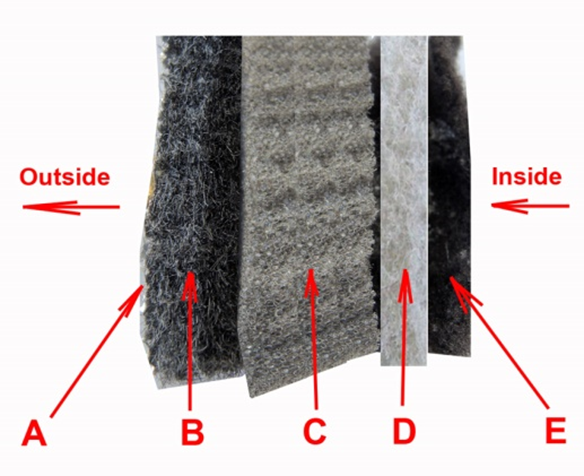The Art and Science of Sport Shoes Design
The realm of sport shoes design is a fascinating interdisciplinary field that marries aesthetics, functionality, and innovative technology. As athletic pursuits evolve and consumer demands shift, the art of designing the perfect sport shoe has become both a science and a creative endeavor. This article delves into the key components that contribute to effective sport shoe design, highlighting elements such as materials, ergonomics, technology, sustainability, and market trends.
Materials Matter
The choice of materials is fundamental in sport shoes design. Designers must select fabrics and components that not only provide durability and support but also enhance the wearer's experience. Traditionally, leather and canvas were staples, but modern sport shoes often incorporate synthetic materials like mesh, rubber, and EVA (ethylene-vinyl acetate) foam. These materials offer lightweight properties, breathability, and cushioning that are crucial for athletic performance.
Moreover, the integration of advanced materials such as Gore-Tex allows for waterproof designs while facilitating breathability. Reflective materials are also increasingly common, especially in shoes designed for running or cycling in low-light conditions, enhancing the safety of athletes.
Prioritizing Ergonomics
Ergonomics is an essential aspect of sport shoe design, focusing on how shoes fit the human foot and how they interact with the body in motion. A well-designed shoe should provide adequate arch support, heel cushioning, and overall stability to prevent injuries during physical activities. Many brands employ biomechanical research to understand the movement patterns of athletes, enabling them to create shoes that align with natural foot dynamics.
The concept of 'fit' has evolved as well. Brands are programming 3D foot scanning technologies to create customized designs that cater to individual foot shapes and sizes. This trend towards personalization not only enhances comfort but also boosts athletic performance by ensuring that shoes are tailored to the unique biomechanics of each user.
Embracing Innovation
Innovation is a driving force in sport shoe design. This field benefits enormously from advancements in technology, leading to the development of features that were previously unimaginable. For instance, Nike’s Flyknit technology revolutionized the way shoes are manufactured, allowing for a lightweight, form-fitting upper without the need for multiple pieces. This not only minimizes waste in production but also creates a shoe that fits like a second skin.
sport shoes design

Additionally, companies are incorporating smart technology into sport shoes, with features like embedded sensors that track performance metrics such as distance, speed, and even calories burned. The fusion of sports with technology reflects the modern athlete's need for data-driven training methodologies, underscoring the evolving landscape of sports gear.
Sustainability in Design
As environmental consciousness grows, sustainability has become a pivotal consideration in sport shoe design. Companies are increasingly seeking eco-friendly materials and manufacturing processes to reduce their carbon footprint. Brands such as Adidas and Allbirds are leading the charge in creating shoes made from recycled plastics and other sustainable materials.
Moreover, eco-design principles are being integrated into the product lifecycle, from design to recycling. The concept of circular design, where products are created with their end-of-life in mind, aims to ensure that materials can be reused or recycled, minimizing waste in landfills.
Catering to Trends
Understanding market trends is crucial for sport shoe designers seeking to capture consumer interest. The rise of athleisure has blurred the lines between sportswear and everyday fashion, prompting designers to create sport shoes that are not only functional but also stylish. Collaborations with fashion designers and celebrities have further propelled the aesthetic appeal of sport shoes, making them a staple in casual wardrobes worldwide.
Additionally, the growing interest in specific athletic niches—such as trail running, cycling, or high-intensity training—has driven brands to produce specialized shoes tailored for these activities. Marketing strategies that communicate performance benefits while maintaining a stylish image are essential for attracting and retaining customers.
Conclusion
In conclusion, the design of sport shoes is a dynamic and multifaceted discipline that combines various aspects of material science, ergonomic study, technological innovation, and market awareness. As athletes continue to seek both performance and style, the art of sport shoe design will undoubtedly continue to evolve, pushing the boundaries of what is possible in the realm of footwear. With a commitment to sustainability and personalization at its core, the future of sport shoe design promises to be as exciting as the athletes who wear them.
-
Stay Dry in Any Condition with WadersNewsJul.17,2025
-
Elite Performance with Camouflage Combat BootsNewsJul.17,2025
-
Dry and Comfortable with Green Rubber Garden ShoesNewsJul.17,2025
-
Convenient Protection with Foldable RainbootsNewsJul.17,2025
-
Comfort and Protection with Neoprene Work BootsNewsJul.17,2025
-
Brighten Rainy Days with Floral Rain BootsNewsJul.17,2025
-
Safety Wellies: The Ultimate Combination of Protection, Comfort, and VisibilityNewsJun.19,2025











